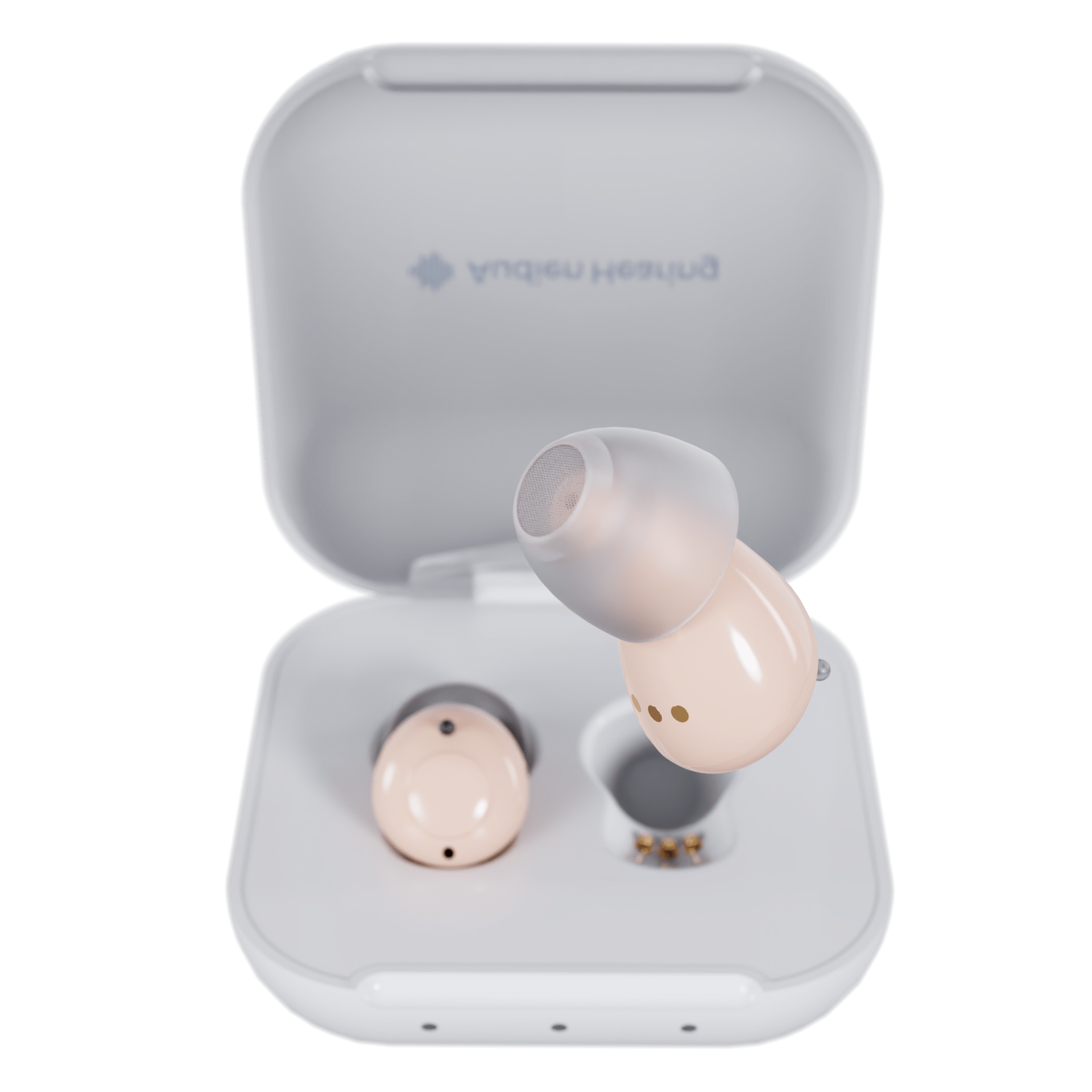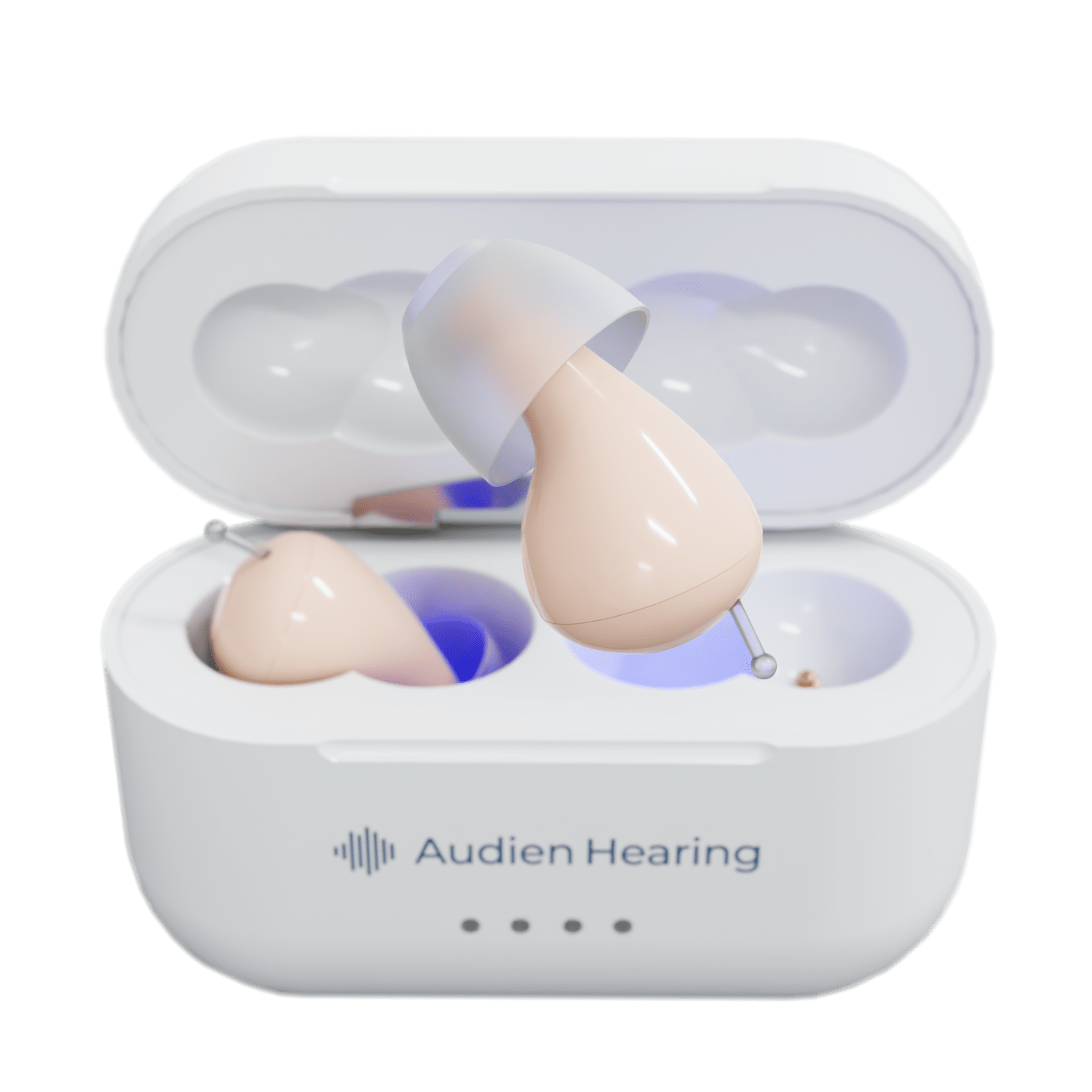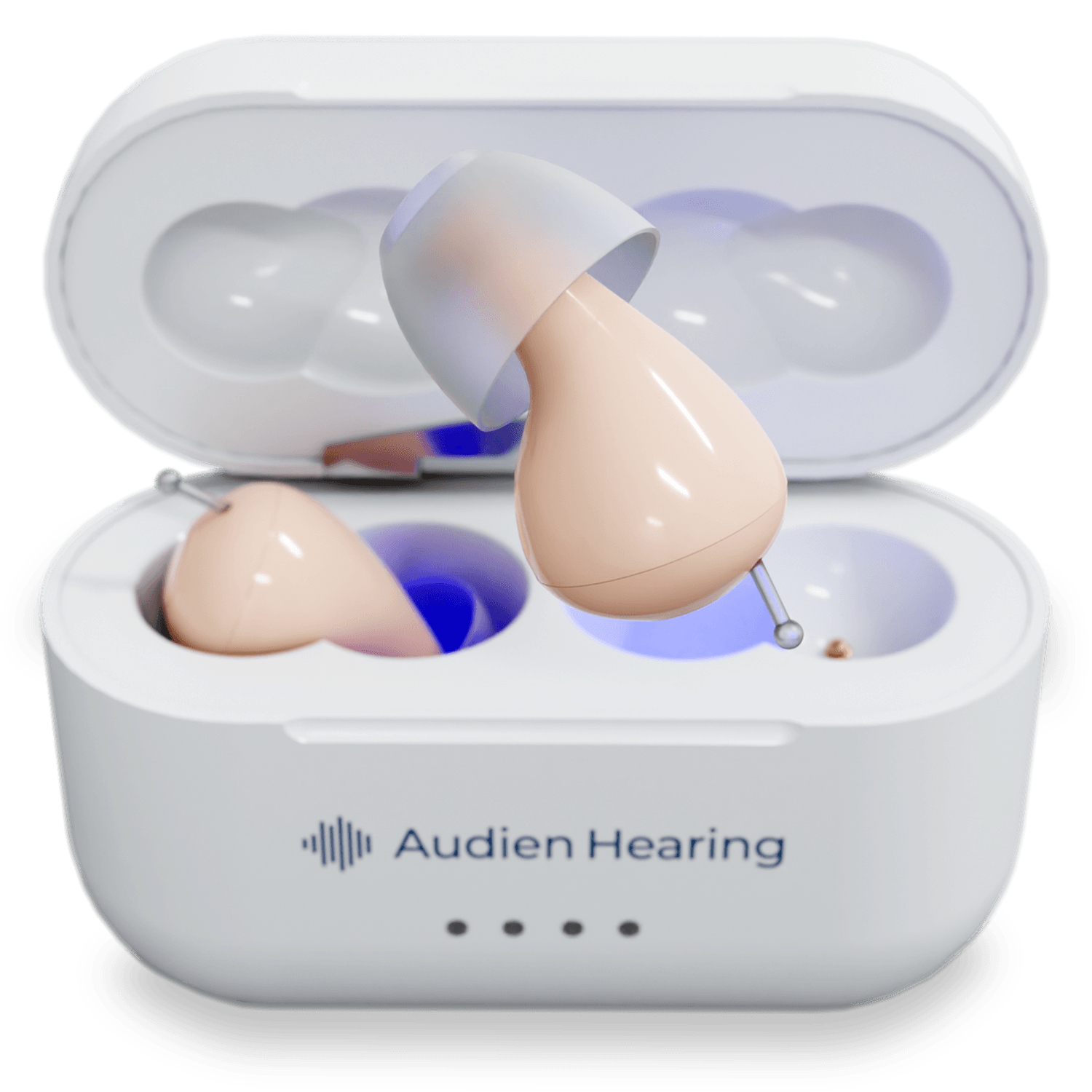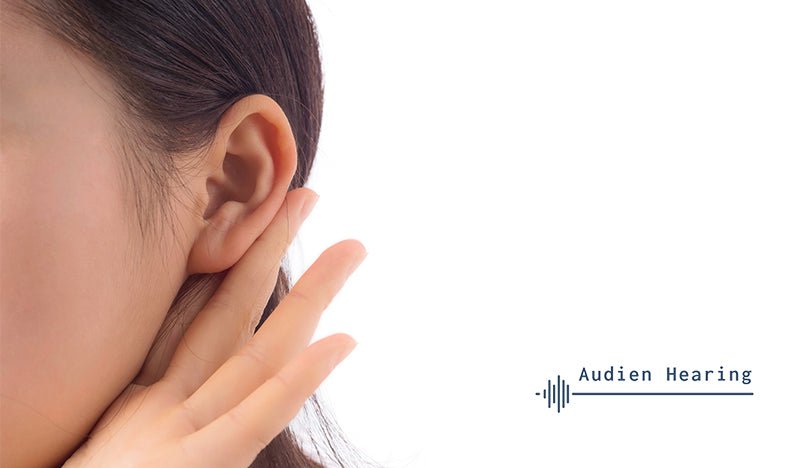
In this case, the inner ear is perfectly normal but because the sound doesn't get through to it, it won't be able to send any signal to the brain. Without the ear transmitting impulses to the brain, the brain is unable to receive any information about sound, and this results in hearing loss.
If you have conductive hearing loss, the sound level that gets into the ear is reduced on its way to the cochlea in the inner ear. This results in difficulty hearing soft sounds and louder sounds becoming muffled.
Signs of Conductive Hearing Loss
Since the auditory nerve and the inner ear of a person with conductive hearing loss are intact, the major difficulty they'll experience will be related to the loudness of the sound rather than clarity. This is why you will need to increase the volume of the television or ask people around you to be more audible before you can hear what is being said.
Just like every other hearing loss, conductive hearing loss is often accompanied by several symptoms. Here are some of such symptoms:
- The muffling or blocking of sound in one ear.
- Feeling of fullness in your ears. Your ears may also feel like they are stuffed.
- Unexpected hearing loss in one or both ears.
- Pain in the ear or head.
- Difficulty understanding words, this difficulty often occurs when you are in a crowd or when there is background noise.
- Avoidance of social gatherings and withdrawal from conversations.
- Asking others to speak slowly, loudly, clearly, or asking for repetition.
- Frustration with telephone conversations.
- Ease hearing out of one ear than the other.
- Difficulty hearing soft sounds at low pitches and high pitches.
- Difficulty hearing consonants.
- Fluid drainage from the ear. The fluid can be clear or yellow. This can also be accompanied by a foul odor.
- A feeling that your voice is louder or different.
Causes of Conductive Hearing Loss
Conductive hearing loss can be caused by many factors. For a clearer understanding, the causes of conductive hearing loss will be grouped into two, based on the part of the ear that each course affects- the outer ear and the middle ear.
The Outer Ear

Causes of conductive hearing loss in the outer ear include the following:
1.Stenosis
This is the narrowing of the ear canal. Stenosis occurs when there is the formation of thick, solid fibrous tissue in parts of the external ear canal. The formation of this thick tissue causes conductive hearing loss.
Stenosis can be caused by chronic or long-term otitis externa, chemical burns, gunshot wounds, and the build-up of thick and dry skin in the ear canal.
Most cases of stenosis are temporary and they can be treated with ear drops.
2. Earwax Buildup
Earwax is a waxy substance produced by the glands in the ear canal that traps water dust and other particles and prevents them from getting into the eardrum.
Without the ear wax if these particles or substances gain access into the eardrum they can damage or infect the eardrum. It is normal for the body to make ear wax but when there is excess production of earwax hearing can be affected.
Normally when the body produces the right amount of earwax, the ear wax dries up and falls out of the ear, but when there is excess buildup of wax, ear wax can solidify and get pushed deeper into the ear canal. This can prevent sound from passing through the ear canal into the inner ear and this results in conductive hearing loss.
People with oddly shaped or small ear canals often experience impacted ear wax-related hearing loss.
Conductive hearing loss caused by earwax buildup is often temporary. When the ear wax is removed normal hearing is restored.
3. Otitis Externa
Otitis externa which is also known as swimmer's ear is an infection of the outer ear canal. This infection is caused by the logging of water in the ear after swimming. It often runs from the eardrum to the outside of the head.
The logging of water in the ear creates a conducive environment for bacteria and fungi to grow. The growth of the bacteria or fungi in the ear causes the inflammation of the external ear canal.
Aside from the inflammation of the external ear canal, otitis externa is also characterized by itchiness of the ear canal, ear pain, temporary hearing loss, pus, or discharge from the affected ear.
4. Exostoses
Exostoses is also known as bone spur. It is the formation of a new bone or bone-like protrusion on the surface of a bone. Exostoses can happen anywhere including inside the ear.
Exostoses is also commonly known as surfer's ears. It is commonly associated with surfers because the abnormal formation of bone in the ear canal is caused by exposure to cold wind and water.
The exposure of the ear to cold wind makes the bone surrounding the ear canal develop lumps of new bony growth. This growth can constrict or block the ear canal. The blockage of the ear canal can cause water and wax to get trapped in the ear and this can cause an infection.
When bone spurs form in the ear canal, they can cause blockages and restrict the flow of sound from the outer ear into the inner ear.
Exostoses is not peculiar to surfers, it also affects people who engage in activities in the cold such as diving, kayaking, jet-skiing, windsurfing, and sailing.
5. Microtia
This is a congenital abnormality that is present in children. Even though the actual cause of Microtia is not known, it has been linked to the use of drugs or alcohol, maintaining a diet low in carbohydrates, the use of the acne medication Accutane, and genetic conditions during pregnancy.
This congenital malformation causes the external part of a child's ear to be underdeveloped or malformed.
Microtia often develops during the first trimester of pregnancy and it mostly affects one ear. In some rare cases, Microtia affects both ears.
The Middle ear
Some common causes of conductive hearing loss in the middle ear, include the following:
1.Ruptured Eardrum
A breach or the rupture of the eardrum or the tympanic membrane can cause conductive hearing loss.
A ruptured eardrum can be caused by the use of sharp objects in the ear, chronic ear infections, sudden change in pressure, sudden exposure to loud noise, and trauma or blow to the head.
A ruptured eardrum is common and in most cases, the eardrum repairs itself after a few days. In rare cases where the damage done to the eardrum is severe, a tympanic graft can be done to repair the damage.
Symptoms of a ruptured eardrum include: radiating pain in the face, hearing loss, ringing in the ear, dizziness, infection, and water seeping from the ear after swimming.
During the period where the eardrum is ruptured, hearing loss will occur because there is no way for the sound getting into the middle ear from the outer ear to be relayed to the inner ear.
2. Tympanosclerosis

This a condition that causes the thickening or calcification of the tympanic membrane. There are no obvious symptoms associated with Tympanosclerosis asides from conductive hearing loss.
Without the appropriate medical attention, diagnosing Tympanosclerosis can be hard. The ear has to be examined before it can be identified. The easiest way it is diagnosed is that upon inspection of the ear, chalky white patches will be seen on the eardrum.
3. Otitis Media
Otitis media refers to a group of inflammatory diseases of the middle ear. It is often triggered by a buildup of fluid in the middle ear.
A common type of otitis media is acute otitis media. Asides from the inflammation of the ear, acute otitis media is also accompanied by ear pain. Otitis media can cause conductive hearing loss in both adults and children.
Another type of otitis media is otitis media with effusion. This is the presence of non-infectious fluid in the ear for more than three months. It doesn't cause any infection but there can be an occasional feeling of fullness in the ear.
4. Eustachian Tube Blockage
The eustachian tube is a small tube located between the middle ear and the upper throat that is responsible for equalizing pressure in the ear and draining fluid from the middle ear.
The eustachian tubes are naturally designed to remain closed, but they open when you yawn, chew, or swallow.
The eustachian tube can get blocked for different reasons. Blockage of the eustachian tube results in eustachian tube dysfunction, which is characterized by pain, feeling of fullness in the ears, tickling feeling in the ear, tinnitus, hearing difficulties, and ear pain.
Eustachian tube blockage is often temporary and can be resolved with simple home remedies. It is however important to see a doctor if you have recurring episodes of eustachian tube blockage.
5. Otosclerosis
Otosclerosis is a medical term used to describe the abnormal hardening or remodeling of bones in the middle ear. Bone remodeling is a natural process in the body that is aimed at replacing old tissues with new ones.
A bone remodeling process that doesn't follow the natural course can affect the ability of sound to travel from the middle ear to the inner ear and cause conductive hearing loss.
6. Ossicular Chain Discontinuity
This is a break or a breach in the connection between the bones in the middle ear. There are three bones in the middle ear named incus, stapes, and malleus. These three bones are collectively known as ossicles.
The sound vibration that is collected from the outer ear is channeled to the eardrum through the ossicles. The stapes then carry the sound vibration into the fluids of the inner ear.
If the ossicles are not connected properly or are separated, the middle ear will not be able to relay sound to the inner ear and this will cause conductive hearing loss.
Ossicular chain discontinuity can be caused by otosclerosis, infection, skull fracture, and trauma.
Difference between Mild and Moderate Conductive Hearing Loss

Just like every other type of hearing loss, conductive hearing loss is divided into various types depending on the degree or severity of the loss of hearing. For the sake of this post, we will be examining mild and moderate conductive hearing loss.
Hearing loss is divided into categories based on the minimum threshold that an individual can detect. The minimum threshold is measured in decibels(dB). Decibels are the unit used to mention the intensity of sounds.
Before we proceed to examine the difference between mild and moderate conductive hearing loss, it is important to note that all hearing losses are not the same. Even if two individuals have the same type or degree of hearing loss, the impact and experiences of the two individuals cannot be the same.
It is also important to note that the fact that a hearing loss is referred to as mild or moderate does not mean that the hearing and communication difficulties are mild or moderate.
In examining the differences between mild and moderate conductive hearing loss, we will examine each type of hearing loss separately while itemizing the characteristic features of each type of hearing loss.
Mild Conductive Hearing Loss
The thresholds for mild hearing loss is between 25 to 40 decibels. Mild hearing loss can be properly managed by adults but children with mild hearing loss can experience impacted language development.
The feeling of mild conductive hearing loss can be likened to placing fingers in your ear. This is often caused by a problem in the outer ear that prevents proper reception and transmission of sound to the middle and inner ear.
Below are some of the symptoms of mild conductive hearing loss
- Difficulty hearing soft speech from soft-spoken people or young children.
- Difficulty hearing speech or keeping up with conversations in noisy places.
- Ease hearing loud or intense vowel sounds and difficulty hearing soft consonant sounds.
- Repeating or asking for repetition during conversations.
Moderate Conductive Hearing Loss
People with moderate conductive hearing loss have thresholds between 41 to 55 decibels. This is often characterized by difficulty hearing speech at a normal level.
In most cases, hearing aids are prescribed for people with moderate hearing loss. The vocabulary, language, and comprehension of children with moderate conductive hearing are often affected.
The following are symptoms of moderate conductive hearing loss:
- Difficulty to understand speech without hearing aids. You may be able to hear without hearing aids but there will be difficulty understanding what is being said.
- Speech must be very loud before it is understood.
- Turning up the volume of the television, radio, and phones to higher volume levels.
- Difficulty keeping up with conversations.
- Difficulty hearing vowel sounds and missing consonant sounds.
From the few symptoms of each type of conductive hearing loss examined above, it is obvious that there are certain differences between the two types of conductive hearing loss.
For instance, while a person suffering from mild conductive hearing loss may be able to hear vowel sounds but experience difficulty hearing soft consonant sounds. People with moderate conductive hearing loss are not just unable to hear vowel sounds, they also miss consonant sounds.
Also, for most cases of mild conductive hearing loss, the difficulty in hearing seems to be associated with soft sounds, but with moderate conductive hearing loss, the problem is not just in the hearing, comprehension is also affected.
Without hearing aids a person with moderate hearing loss can hear speech but is unable to understand what is being said. This points to the fact that the underlying cause transcends beyond the outer ear to the middle ear.
It means that the outer ear is receiving sound but the middle ear can't pass it to the inner ear where the sound signal will be sent to the brain for interpretation. So despite sound getting into the ear, what is being said cannot be understood. With mild conductive hearing loss, on the other hand, the sound may sound muffled, but comprehension is not affected.
Most people with mild conductive hearing loss can learn to manage it and live their normal lives without any side effects but people with moderate conductive hearing loss will often require the use of hearing aids to function properly.
Conclusion
Conductive hearing loss whether mild or moderate can be temporary or permanent. Some of the causes of conductive hearing loss we examined above are progressive.
It is therefore important to urgently seek medical help the moment you notice any problems with your ear. Prompt medical care can save your ears from being permanently damaged.
However, in cases where the hearing loss is permanent, some devices can aid your hearing.
Do you have mild or moderate conductive hearing loss? What symptoms do you have? Share your experience with us.













